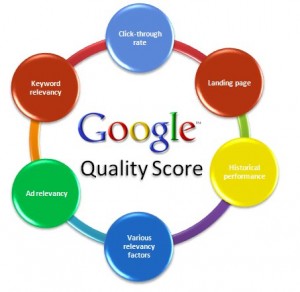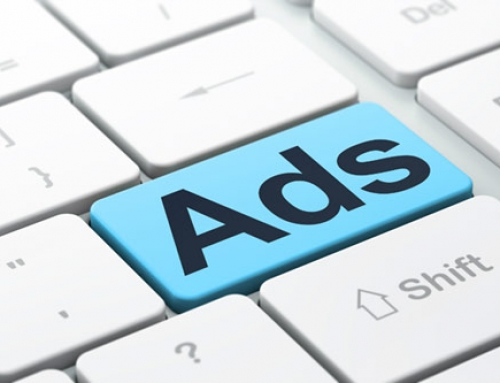 Here we’ll talk about some basic SEM theories, tips, and things you can try for managing a search engine marketing campaign(s) on Google and other search engines. First, a few terms and concepts one must always keep in mind:
Here we’ll talk about some basic SEM theories, tips, and things you can try for managing a search engine marketing campaign(s) on Google and other search engines. First, a few terms and concepts one must always keep in mind:
- Quality Score
- Keyword Relevance
- CTR
- Landing Pages
- After Landing Options
What matters and is often extremely frustrating, honestly, is the Quality Score. What to keep in mind is how the other three impact it. Our goal is alway to achieve a good ROI, right? Yes getting a lot of clicks is great, but if they don’t buy your product, then it’s not the really best marketing campaign, is it? We’re not looking for PR, we’re looking for marketing strategies that make money for your company – getting the most out of your marketing dollar; bang for your buck. The “beauty” of Google Ads is that it allows people who do not have a ton of money to spend to compete with the big boys who are spending 100 times more a day to target the same customers.
In short, if you are designing your search engine campaigns so that you are achieving really high quality scores, then that means you have the luxury of spending less money per click to get the same ad ranking on the page as competitors with lower quality scores.
 The applicability or relevance of your keywords, your landing page URL, the landing page content, transparency, ease of use, applicability etc., and historic click through rate of your keywords, ads, and adgroups all have an impact on the quality score… And even when you think every possible measure is perfect… sometimes your Q Score is STILL low… welcome to Google Ads (and the competition bidding a lot of money for clicks as well).
The applicability or relevance of your keywords, your landing page URL, the landing page content, transparency, ease of use, applicability etc., and historic click through rate of your keywords, ads, and adgroups all have an impact on the quality score… And even when you think every possible measure is perfect… sometimes your Q Score is STILL low… welcome to Google Ads (and the competition bidding a lot of money for clicks as well).
Sadly… since HISTORIC click through rate (CTR) is also a measure that determines the overall quality score, that means if you have a bad week or two where you have a very low click through rate, then your quality score goes down… and it’s much more difficult to make it go back up than it is to be downgraded.
Looking at keyword relevance first. Basically, it’s a combination of density and (metaphorically) the density of other keywords or phrases that are cousins of the keyword on which your bidding; and then tie in the concept of the actual searcher’s intent. For example: your bidding on the keyword phrase: “fishing poles”. That would have cousins like “fishing line, reels, lures, etc.” that would logically would “have something to do” with fishing poles. So you want not only your targeted keyword to appear in every thread of the campaign (the ad text, the destination URL, and the landing page), but her cousins and distant relative keywords and phrases should also be present (particularly on the landing page).
The more direct (the actual keyword / phrase) AND relational (the cousin phrases) matches you have, the more your quality score will be bumped up. You have to actually take the time to sit down and plan this sort of stuff; be a bit of a wordsmith and synonym…smith. And don’t forget that the actual keyword on which your bidding ought to be in the actual ad text itself as well as the display and destination URL… and the page title… hopefully you’re beginning to see how and why you might end up with a lot of different, and very specific, adgroups within campaigns so that each ad, URL, and landing page can be the most targeted possible.
CTR (click through rate) is somewhat of a bummer. I’m not going to lie on this one. Everyone knows that the top two ads are naturally based on where the searcher’s eyes hit and how we read are going to get the most clicks. Only someone in heavy research mode, of if you have an amazingly well-written tag link in an ad that demands attention will the sidebar ads get even close to equal attention. You get there by either bidding the most, or having a rocking quality score.
But wait…. click through rate is something (and a big something) that helps determine the quality score…? Yup. A very slight catch 22 on that one. I used to be able to start campaigns as I dubbed “from the bottom up” insofar as bidding very low and tweaking the non-bid-amount based aspects of the quality score first. It was a way to ensure my clients’ costs didn’t run out of control. However, it feels more and more recently the CTR is getting more heavily weighed, which means that… well… you MUST bid very high in the beginning. High from the get go. Big money out of the starting gate. This at least gives your new adgroups a chance at a decent click through rate by the nature of being at the top of the lists of ads.
It gives you a chance to optimize and test the ad text and landing page design / content before your CTR becomes too low to make crawling back up the hill a long and painful process. Once you’ve optimized like crazy, then all of the aspects that constitute the quality score are higher, and your actual cost per click starts to go down. Moral: bid high. It buys time to optimize the rest.
Landing pages for your campaigns should be:
- Easy to use and navigate;
- Have a very clear call to action;
- Be no more than 1 click away from either buying or requesting more info;
- Contain keywords and phases, as well as all their cousins as detailed above;
- Be targeted (presentation-wise) to fit your demo. Sometimes that means straying a little from the core design of your entire website, but that’s OK.
From there, test, test, test. Use Google Conversion Optimizer code on your thank you pages, test out some heat map options to see how people visiting the page are navigating, and above all use the data to improve the pages. They’re never perfect.
Now that you’ve got them to your page, that’s it, right? NO!!! Try retargeting. Grab their email. Put offers on the landing page that encourage MORE interaction with your company. Simply knowing you and your product exists is rarely enough. Engage them. Integrate your other promotions so that the money you’re spending on search engine marketing extends BEYOND just getting them to your landing page. Integrate, integrate, integrate.
Do your best to keep those 5 primary items in mind when you’re building, checking, and optimizing your SEM campaigns. Put them on a sticky note so that they’re always in front of you and never overlooked. Great quality scores across all your adgroups is very difficult to achieve, so keep at it. The more you test and try, the more you’ll learn and the better you’re ROI will become.








